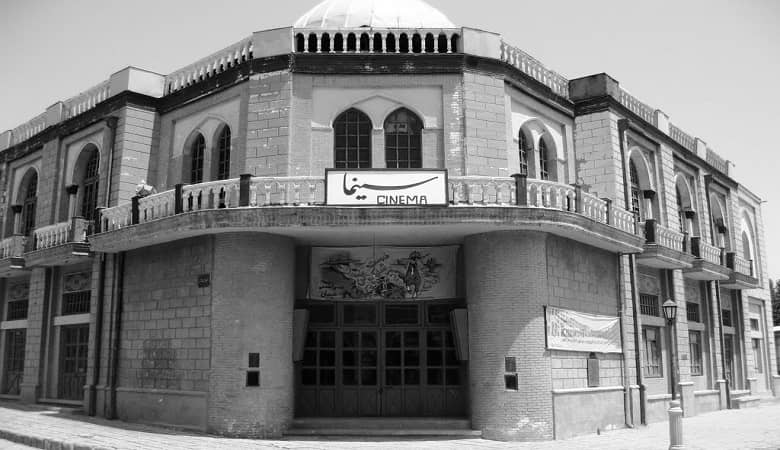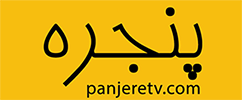During his trip to France, Muzaffaruddin Shah Qajar got acquainted with the Cinema Tograph machine for the first time, and after this acquaintance, he ordered Mirza Ibrahim Khan Sahafbashi to buy this machine. In this way, in 1279 AH, the first cinematograph machine entered Iran, which is the beginning of the history of Iranian cinema.

The first images that this device recorded and broadcast were the images of carnivals and Farangi festivals that Mirza Ibrahim Khan Sahaf Bashi had recorded with this device. In 1283, Mirza Ebrahim Khan opened the first movie theater in Tehran on Cheragh Gaz Street, and the first notification about the cinema was published in newspapers in 1287 AH.
Iran’s first Movie theater
In 1279, just five years after the Lumiere brothers invented cinema, the Catholics of Tabriz established “Cinema Soli” in the city of Tabriz; But due to the unavailability of new movies, this theater was closed in 1295.
The first Iranian movie
In 1309, “Evans Oganians” made the first Iranian movie called “Abi and Robi”. Before that, some of the newly established cinemas showed western movies with Persian subtitles. After that, in 1312, a person named “Ardeshir Irani” in collaboration with “Abdul Hossein Sapenta” made the first Iranian talkie film called “Dochter Ler” in the city of Bombay, India, and this film provided the preparation for the production of other Iranian films.
Ardeshir Khan Armenian
“Ardashes Batmagrayan” known as Ardashir Khan Armenian was the first person who was able to open a movie theater in 1291 Hijri and became popular by broadcasting the Tarzan series. It was very difficult for Awami people who did not know foreign languages to understand foreign films at that time. One of the important actions of Ardeshir Khan Armenian was to hire a translator who would simultaneously translate the sentences of the film into Farsi for the audience.
Ardeshir Khan also brought a group of musicians to the film set, who played music suitable to the content of the films, and had a great impact on the popularity of cinema for the general public. He also created a buffet for the first time in the movie theater and gave lemonade to the audience. Armenian Ardeshir Khan opened “Modern Cinema” theater in 1994 and “Khorshid” theater in 1996 in Tehran.
Establishment of the first cinematography schools in Iran
“Evans Oganians” who studied in the field of cinema, founded the first acting school in Tehran in May 1309 with 300 participants, only 12 of them completed the course. In the second period, Oganians added the branches of filmmaking, music, dance, clothing, etc. to these classes and were able to attract more students.
The presence of women in the cinema hall
Coinciding with the return of Iranian educated youths from Europe during the Qajar era, while cinema halls had evolved, these young people decided to establish special halls for women to watch. One of these people was Colonel Alinqi Waziri, who along with Khan Baba Motazadi founded the first dedicated movie theater for women. In this way, cinema was also welcomed by women and this process continued until the Pahlavi era. In 1314, after the implementation of the Hijab Law, special theaters for women were gathered, and from then on, men and women watched movies in the same theater next to each other.
Cinema after the Qajar era
The cinema industry, which had changed a lot in Iran, at the end of the Qajar era, due to the problems of importing new films, it repeated and lost its hot market and reached stagnation. The change in the political climate in the early years of the Pahlavi rule and the outbreak of the Second World War caused Iranian cinema to experience more and more stagnation.
Iranian cinema from the 20s to the 30s
In the 1320s, Iranian film production companies were gradually formed and cinema became more popular among the common people. In the 1330s, Iranian cinema progressed, to the point where animation entered Iran, and “Esfandiar Ahmadieh” made the first animated short film in Iran in 1336 called “Melan Nasruddin”. Famous filmmakers of this period include Shahla Riahi (the first female Iranian director), Hoshang Kavousi, Ismail Kushan, and Samuel Khachikian.
Iranian cinema from the 1340s to the 1350s
This decade can be considered the peak period of Iranian cinema. The making of the movie “Ganj Qaroon” in this period led to the creation and expansion of films in the style of Persian films, which were welcomed by the public. A little later, Dariush Mehrjoui made the film “Cow” and Masoud Kimiaei made a fundamental change in this way of filmmaking, which became known as the new wave of Iranian cinema. In the same decade and in 1348, the formation of the think tank for children and teenagers provided the basis for making cultural films and then the cultural cinema.
Iranian cinema after the revolution
After the Islamic Revolution, Iranian cinema underwent cultural changes. In this period, due to the lack of editing criteria for making films, cinema stagnated until 1360. From 1362 onwards, filmmaking was reshaped according to the laws and regulations of the Islamic Republic of Iran, and young filmmakers of the 1950s, such as Masoud Kimiaei, Dariush Mehrjooi, Abbas Kiarostami, and Bahram Bayzaei, had a significant impact on the filmmaking process of this period with their brilliant works. .
